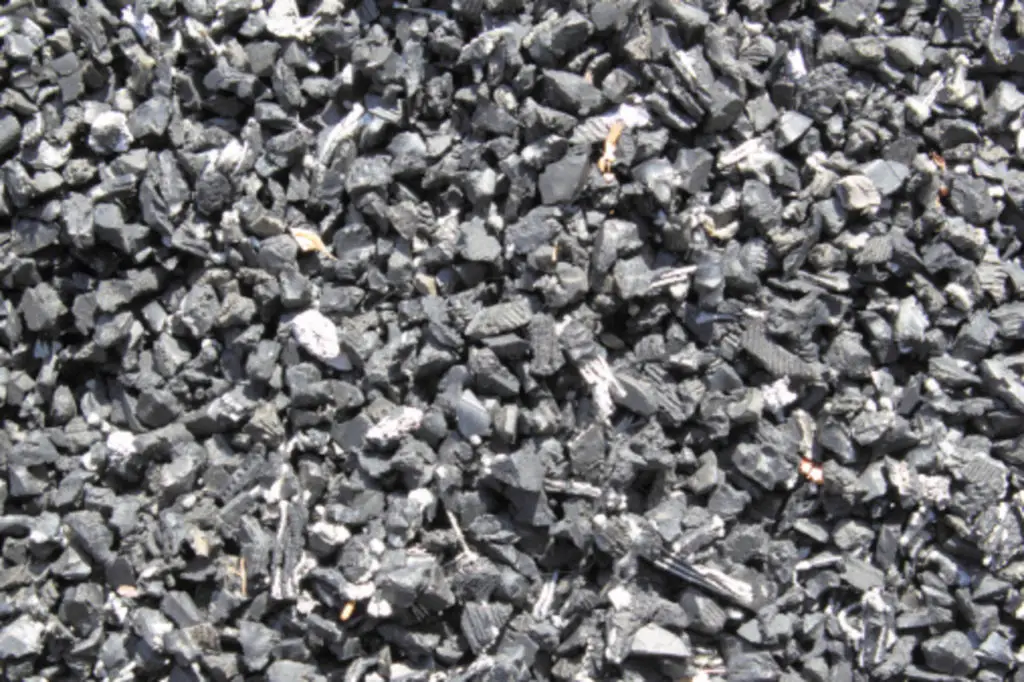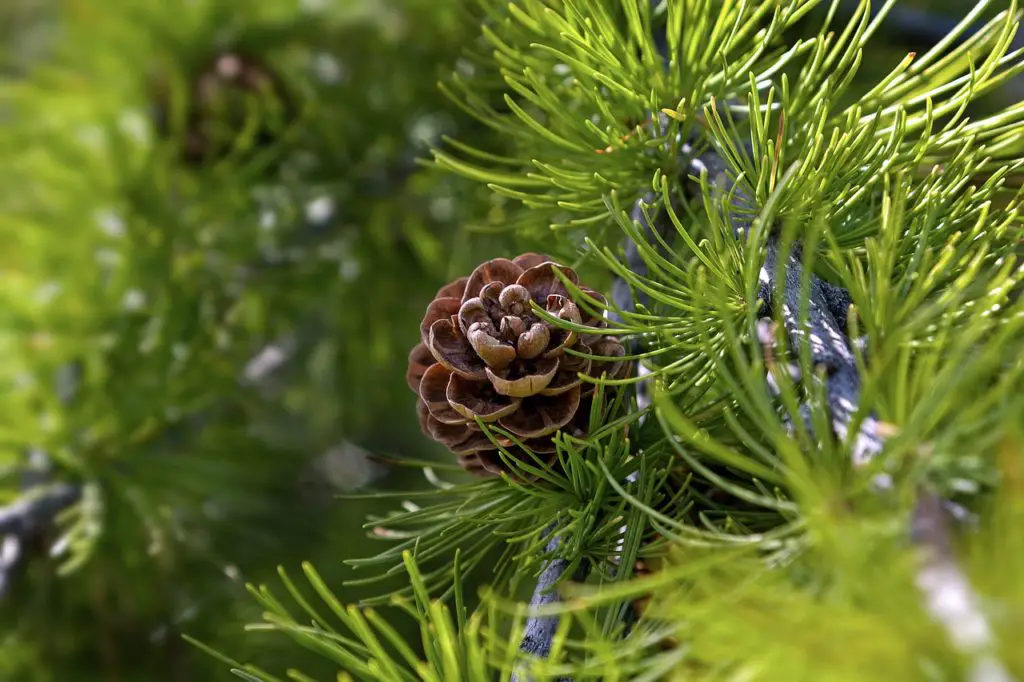Most gardeners have mixed feelings when it comes to rubber mulch. Some are skeptical about its lack of organic taste — it doesn’t add nutrients to the soil. At the same time, others are impressed with the idea that rubber mulch doesn’t decompose.
Can rubber mulch be used around plants, therefore?”
Yes, you can use it around your plants. Rubber mulch has insulating properties, which keeps plants under moderate temperatures. It doesn’t attract pests, plus it also suppresses weeds from growing around the plants. On the other hand, rubber mulch can be toxic for some plants.
We’ll consider whether the rubber is the best mulch for your plants, its pros and cons, and more. So read to the end.
Can Rubber Mulch Be Used Around Plants
Yes, you can use rubber mulch around plants. It has unique and long-lasting properties, suitable for most plants, especially plants that thrive under warm temperatures.
Rubber mulch is waterproof. Therefore, your plants get all the water you give them. What’s more, rubber mulch won’t compete with your plants for nutrients. Rubber mulch is immune to the decomposing soil bacteria, which take in nitrogen from the soil.
Rubber mulch also improves the health of your plants by reducing weed/plant competition in the garden. Like most plants, weeds need light to grow. Rubber mulch works by preventing sunlight from reaching the weed, thus impeding their growth.
Plus, rubber mulch doesn’t attract or harbor insects. The taste and structure of rubber mulch make it impossible for pests to build nests in it; rubber is not edible.
Additionally, unlike organic mulch that decomposes, rubber mulch is everlasting. Well, to be exact, it takes 50-80 years for rubber to decompose. So, once you have mulched your plants, you will do it after 80 years, and I don’t think you’ll do it twice.
Does Rubber Mulch Get Too Hot For Plants?
Not really, rubber mulch never gets too hot for plants. However, there are some factors to consider, such as the color of the rubber and the kind of plant. Why? Some colors, for example, black, attract the most heat. It absorbs the highest wavelength of sunlight. Hence, black rubber mulch wouldn’t be a great idea for plants that don’t like high temperatures.
Heat-loving plants like the warming effect of black rubber mulch, though. However, perennial plants would prefer a cool environment without black rubber mulch.
Therefore, if your region has a hot climate, purchasing black-colored mulch might be a terrible idea.
In cooler regions, though, black rubber mulch is the best option. Due to the mulch’s heat-insulating properties, you can create a warm microclimate for your plants to grow.
You can dye your rubber mulch to suit the environmental condition in your region. Black mulch is for cool climates, while bright-colored mulch is for hot areas.
Is Rubber Mulch Flammable?
Yes, rubber mulch contains petroleum, which makes it flammable. Compared with regular wood mulch, rubber mulch burns faster and hotter, and it’s also arduous to put the fire out.
Also, rubber mulch has a high carbon ratio, which is a catalyst for fire. I know; this makes you wonder whether rubber mulch is really safe. However, cases of fire outbreaks in rubber mulched gardens are quite a few.
Consequently, it’s essential to keep the mulch’s fire hazard in mind and ensure it’s away from fire.
Does Rubber Mulch Damage Plants?
If not properly maintained, rubber can damage your plants. To better understand this concept, here are a few reasons why rubber mulch may cause damage to your plants. This could be direct or indirect impacts on your plants.
- The recycled tires that make rubber mulch may contain roadway contamination. If not well processed, these contaminations can find their way to your garden.
- Negatively, rubber mulch is organic. It doesn’t add any nutritious value to plants and soil.
- Rubber can poison your plants (we’ll discuss this later)
This, however, shouldn’t be a reason for not using rubber mulch around non-edible plants. Why? There are more benefits than cons of using rubber mulch around your plants. For example;
- It keeps your plants free from pests and weeds.
- It improves water and fertilizer absorption. Rubber doesn’t absorb water, plus it doesn’t take in nutrients from the soil as organic mulch.
- In the long run, rubber adds zinc to the soil, which reduces alkaline levels in the soil. Zinc is functional in improving plants’ root infiltration capacity.
- It helps regulate the soil temperature.
- Lastly, using rubber mulch means no tree is cut down to make wood chips.
Does Rubber Mulch Attract Pests Around Plants?
Rubber mulch doesn’t attract pests. Pests only multiply in areas with conducive environments; that’s why you’ll always find termites and all sorts of insects in organic mulch.
But with rubber mulch, say goodbye to such pests. The rigidity of the rubber makes it hard for the insects to mold it into nests. Plus, the taste and smell of the rubber mulch make it unbearable for pests to live in it. Therefore, you can use rubber mulch around your house to keep termites and ants at bay.
With no pests to disturb the health of your plants, then you’re guaranteed better yields with rubber mulch.
However, not all pests that rubber mulch repels. The Asian cockroaches find the rubber mulch a castle to live in, particularly in its nymph stage -you don’t want cockroaches around the plants.
They can reduce your yield to half, especially if you have a tomato garden.
How Do You Prevent Rubber Mulch From Harboring Cockroaches Around Your Plants?
Simple. By spreading diatomaceous earth or silica aerogel around the plants. The chemical works by destroying the cockroach’s waxy coat, making it unable to retain moisture and eventually killing it.
The pesticides are available in any Agricultural store.
Is Rubber Mulch Toxic For Plants?
Under certain conditions, rubber mulch can be toxic to plants. Generally, there are controversies regarding the benefits of rubber mulch. Some see rubber mulch as lethal to plants, while others see it as harmless and advantageous.
The core of the matter is the chemical compounds that makeups rubber mulch. Rubber indeed contains heavy metals, such as:
- Zinc
- Chromium
- Molybdenum
- Cadmium
- aluminum
Certainly, if such elements leach into the soil, they can alter its pH to extreme levels, hindering the growth process or killing the plants.
However, such conclusions are hard to verify since leaching is very slow. It can even take ten years to leach significant amounts of such metals into the soil. Consequently, applying appropriate treatments can bring the leaching threats to zero.
How Do I Use Rubber Mulch In My Garden?
Installing rubber mulch is a DIY project. Simply follow the guideline below, and you’re good to go. However, do note that it’s easier to install the mulch before planting anything in the garden.
Why? You’re more likely to harm or cover the plants as you level the mulch around the plant.
Step 1: Remove all the weeds in the garden. Uproot the surface weeds first. Then, use appropriate herbicides to spray over persistent underground weeds such as grass. Grass can grow through rubber mulch and make it harder to control after installation.
Step 2: Level the area to facilitate drainage. Your garden must have a good slope to prevent clogging excess water underneath the mulch.
Step 3: Secure the area with edges to reinforce the rubber mulch and keep it from spreading to unwanted areas. However, you can skip this step. It’s not that necessary because rubber is denser than water. Hence, rainwater can’t move the chips.
Step 4: Lastly, spread the mulch over the area. Use a rake to evenly bring the rubber mulch to a depth of 2-4 inches.
Can I Plant On Rubber Mulch?
The number one rule with rubber mulch is NEVER PLANT anything on the mulch -it won’t grow. Therefore, start by preparing the ground and planting your crops.
Then, after the plant has grown, install the mulch around the crops.
Planting anything on rubber mulch will keep your plants from getting water and nutrients from the soil. Besides, rubber doesn’t absorb water.
Moreover, a common function of any mulch is to suppress weeds by preventing sunlight from reaching them underneath. Consequently, covering your garden seed with rubber mulch can prevent germination or stress the plants as they try to break through the mulch.
FAQs
Is Colored Rubber Mulch Safe Around Plants?
Yes, colored rubber mulch is safe around plants. The coloring dye used to color the mulch is perfectly safe for both the plants and the soil. The dye majorly contains oxygen and iron which is non-toxic even to human beings
Bottom Line
Can rubber mulch be used around plants? From my findings, the answer is YES. It keeps pests at bay, retains water, and moderates the soil temperature. What’s more? Rubber mulch is everlasting, you mulch your garden once, and you’re done. It takes about 80 years to start decomposing.
Although it has its disadvantages, for example, it’s quite flammable and adds no nutritious value to the soil; its impressive performance outweighs the disadvantages. Unlike organic mulch, rubber mulch is waterproof and inorganic. It doesn’t compete with plants by taking water and nitrogen from the soil.


